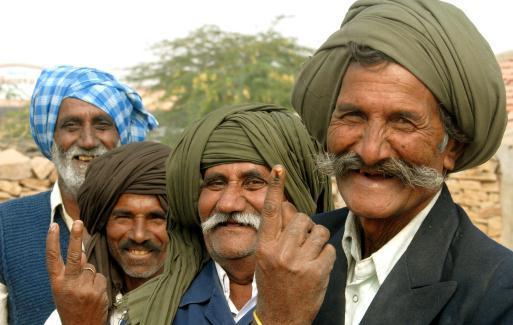 July 24;The two States from the west — Maharashtra and Gujarat — present two somewhat contrasting pictures. This is understandable since Gujarat has been under the spell of one-party dominance for almost two decades now and Maharashtra has settled for a competitive bipolar system between two coalitions. In both States, the ruling parties seem to retain an edge over the opponents; though Gujarat could send a large contingent of Bharatiya Janata Party (BJP) MPs to the Lok Sabha.
July 24;The two States from the west — Maharashtra and Gujarat — present two somewhat contrasting pictures. This is understandable since Gujarat has been under the spell of one-party dominance for almost two decades now and Maharashtra has settled for a competitive bipolar system between two coalitions. In both States, the ruling parties seem to retain an edge over the opponents; though Gujarat could send a large contingent of Bharatiya Janata Party (BJP) MPs to the Lok Sabha.
Ordinarily, when a Lok Sabha election takes place soon after the Assembly election, the ruling party in the State tends to have an advantage. While this applies to Gujarat, that would only be a marginal explanation for the expected good showing of the BJP in that State. The last Assembly elections in Gujarat (in December 2012) have not given much indication of a Congress revival in the State. If anything, the image of Narendra Modi has only grown out of proportion and his rise to the national level has further augmented chances of a BJP sweep in Gujarat. To be sure, the net satisfaction (those satisfied minus those dissatisfied) with the Gujarat government is not very impressive — it is only 41 which is much less compared to many other State governments including BJP governments in Madhya Pradesh or Chhattisgarh. But in terms of preference for a parliamentary election, the BJP has gained nine per cent votes over 2009 while the Congress has lost in equal proportion. With more than half the voters likely to vote for it, the BJP could expect a landslide in the state.
Support bases
One must still be cautious, for two reasons, of making any overestimation of the BJP’s prospects in Gujarat. One is that the BJP’s support is heavily concentrated in south Gujarat and Saurashtra while the Congress is doing reasonably well in north and central Gujarat. Secondly, the BJP leads in urban areas with a greater margin than in rural Gujarat. The recovery of the Congress, however suffers from the fact that its social base is getting restricted only to Dalits, Adivasis and Muslims.
Alliances rule in Maharashtra
In contrast, in Maharashtra, the BJP has not been able to consolidate its position much and is forced to retain its coalition with the Shiv Sena. Even then, the success of the Sena-BJP alliance has been modest. Their coalition has also produced an unintended effect in the form of the Congress-Nationalist Congress Party (NCP) alliance. This rival alliance has denied the Sena-BJP an election victory both in the Assembly and Lok Sabha elections in 2004 and 2009. The Congress-NCP government does not have a very popular record. Net satisfaction with its performance is 35 and not many respondents want to give it another chance. Yet, this less-than-popular record does not necessarily translate into a setback in a parliamentary election. The combined vote share of the Congress and NCP is likely to increase slightly. These additional votes do not come from the rival coalition, but from those who voted for other smaller parties last time. This positive scenario needs to be punctuated by the fact that as many as 27 per cent respondents in Maharashtra are still undecided.
Much in Maharashtra will depend upon the electoral arithmetic. If the Sena-BJP alliance succeeds in building a larger coalition including the Maharashtra Navnirman Sena (MNS), that might change the picture. For the moment, Sena-BJP supporters in our survey seem to be only, moderately excited by this idea: only one in every five supporters of the Sena and BJP want the alliance to include the MNS too. On the other hand, among Congress and NCP supporters, there is substantial support for continuing the alliance (more than half their supporters endorsing it). Second, election history in the State shows that both the Congress and NCP are vulnerable to “rebel” candidates.
With these caveats, the present scenario is tilted in favour of the ruling coalition. But taken together, the west will be more inclined to favour the BJP (and National Democratic Alliance – NDA) rather than the Congress.
